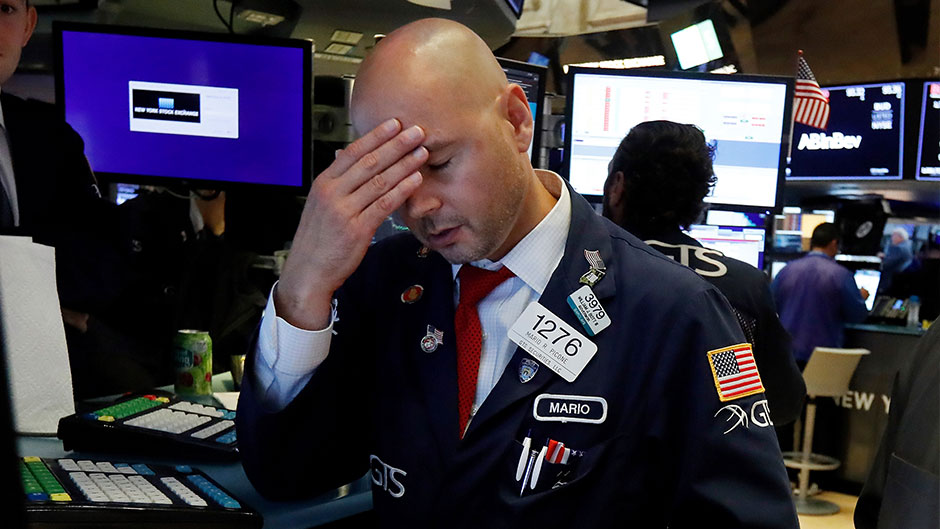Lecturer Paulo Leme, who teaches finance in the University of Miami Business School, answers questions about the U.S. economy, which took a hit last week after some indicators signaled a recession may be on the way in the next 12 to 18 months.

After the stock market fell to its second lowest point in 2019 on Aug. 14, people are sounding the alarm about a possible U.S. recession. Is it a real concern?
They shouldn't. Economic activity in the United States will most likely continue to slow down to about 2 percent in 2020. In the past, factors that have triggered recessions include excessive easing followed by tightening of monetary and fiscal policies; wars; financial crises and a credit crunch; and an oil price shock. None of these conditions are present today, which is why consensus forecast for real Gross Domestic Product (GDP) for 2020 is near 2 percent.
In economic terms, what is a recession?
Economic activity is cyclical, with expansions preceding contractions. A recession is defined as a sustained contraction of real GDP for at least two consecutive quarters. Improved policy management has reduced the frequency and amplitude of recessions. Forward quarterly earnings, leading activity indicators, and accommodative financial conditions do not signal a recession.
What could lead to a recession?
Currently, we are at the late stage of the longest economic expansion on record; only extraordinary events could end it and lead to a recession. President Trump's protectionist trade policy and his discrediting of an institution like the Federal Reserve Bank could become severe enough to cause a large real shock to international trade and a breakdown in business and consumer confidence. Therefore, a shift toward sound economic policies in Washington can help avoid a recession.
What factors caused the stock market to drop in mid-August?
The decline was caused by markets going risk-off, which is when investors sell riskier assets (stocks) and buy safer securities like U.S. Treasury bonds and gold (which saw its price grow). Stock prices fell and bond prices increased, therefore reducing bond yields. Last week, the S&P 500 Index fell 6.1 percent, which is minor in comparison to the 20 percent drop recorded between September and December of 2018. The S&P 500 is still up 23 percent from its lows in December 2018. More important than the change in stock prices is the marked increase in volatility, which is measured by the VIX Index, also called the fear gauge. Policy uncertainty increased the VIX Index from a low 10 percent regime to 15 percent Last week, the VIX peaked to 25 percent, settling at 18.5 percent at the close of the stock market on Friday. Higher volatility and lower bond yields are much more important indicators than the 6.1 percent drop in the S&P 500 last week.
What exactly is a bond yield and how does it affect the stock market?
A bond yield is the rate of return that an investor will receive by holding a bond to its maturity (typically a few years). The relationship between a bond price and interest rates (plus its yield) is inverse. If interest rates rise, bond prices fall. Stock prices can be viewed as dividends or cash flows that are discounted by an interest rate: if interest rates rise, stock prices fall. Normally, when the Fed cuts rates and U.S. Treasury bond yields fall, stock prices rise. However, last week we saw the opposite.
This is so for two reasons. First, what reduced U.S. Treasury bond yields (and inverted the yield curve) is the convergence of higher U.S. bond yields toward negative European and Japanese bond yields. Second, markets are unsettled by Trump's economic policies, selling riskier assets (stocks) to invest in safer assets (bonds). The combination of both forces reduced the U.S. Treasury 10-year bond yield to a record-low 1.55 percent, which is below the Fed's funds policy rate of 2 percent. This is called the inversion of the yield curve (long rates fall below short rates).
Did the Federal Reserve’s decision to cut the federal funds rate — the rate banks charge each other for overnight loans, which effects interest rates — on July 31 have any effect on the bond yield declining?
We cannot blame the rate cut by the Fed for the volatility and yield curve inversion seen last week. Primarily, long rates declined and the yield curve inverted because of the convergence of U.S. bond yields toward the negative yields in Europe and Japan. However, a sequence of events triggered by the Fed's rate cut and followed by higher U.S. tariffs on Chinese exports, the devaluation of the yuan, and President Trump's harsh criticism of the Federal Reserve have all unmoored market expectations, promoting a flight to safety (a portfolio rotation toward U.S. bonds and gold).
Does the inversion of the yield curve signal a recession?
Probably not. Long-term interest rates price many things, including term, liquidity, inflation, fiscal, and credit risk premiums. They also represent expectations about future interest rates. If markets expect a recession, then they will price lower long-term rates and the yield curve may invert. Although the financial press concluded that the inversion foreshadows a recession, I believe that a recession is neither likely nor inevitable. If the Trump administration abandons the trade war and embraces free trade, this prolonged expansion could still give us a few more years of above-potential growth.
How might this downturn in the stock market effect mutual funds and retirement funds?
On a mark-to-market basis, the Net Asset Value (NAV) of equity funds likely declined last week, but they are still up in the year. But, this is what stocks do, they are volatile. Moreover, investors should hold a balanced portfolio consisting of a third stocks and two-thirds bonds. Although stock prices declined, bond prices rose. Therefore, it is likely that a diversified investor made money on a net basis last week.
How will this affect the housing market?
It is safe to say that 15- and 30-year mortgage rates will decline to historic lows. This has to be positive for the housing markets. What happens to housing prices will depend on the combination of real GDP growth, unemployment (at record lows), real wages and the idiosyncrasies of each regional market.

